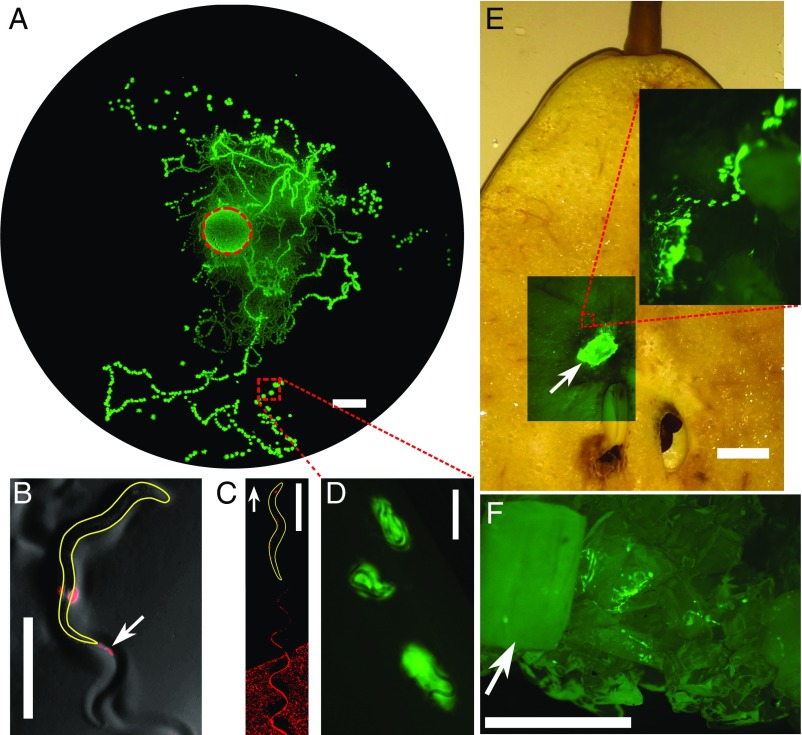Fig. 1.
Redistribution and growth of E. coli bacteria due to locomotion of C. elegans. (A) Trails and patches of bacteria are found away from an initial circular patch (red dashed circle) of bacterial inoculation in which a single worm is placed. The image is taken 4 d after seeding of a bacterial patch with a worm. The bacterial redistribution is due to two main mechanisms: defecation of ingested bacteria (white arrow points to red “feces”) by the worm (B) and entrainment of the bacteria (red) in the wake of the locomoting worm (white arrow shows direction of motion) (C). (D) Worms revisit and colonize the redistributed, growing bacterial patches. Worms disperse bacteria in natural settings such as rotting fruit (E) and soil-like porous medium (F). Arrows indicate initial chunk of worms and bacteria. (Scale bars: A, E, and F, 1 cm; B–D, 500 m.)

